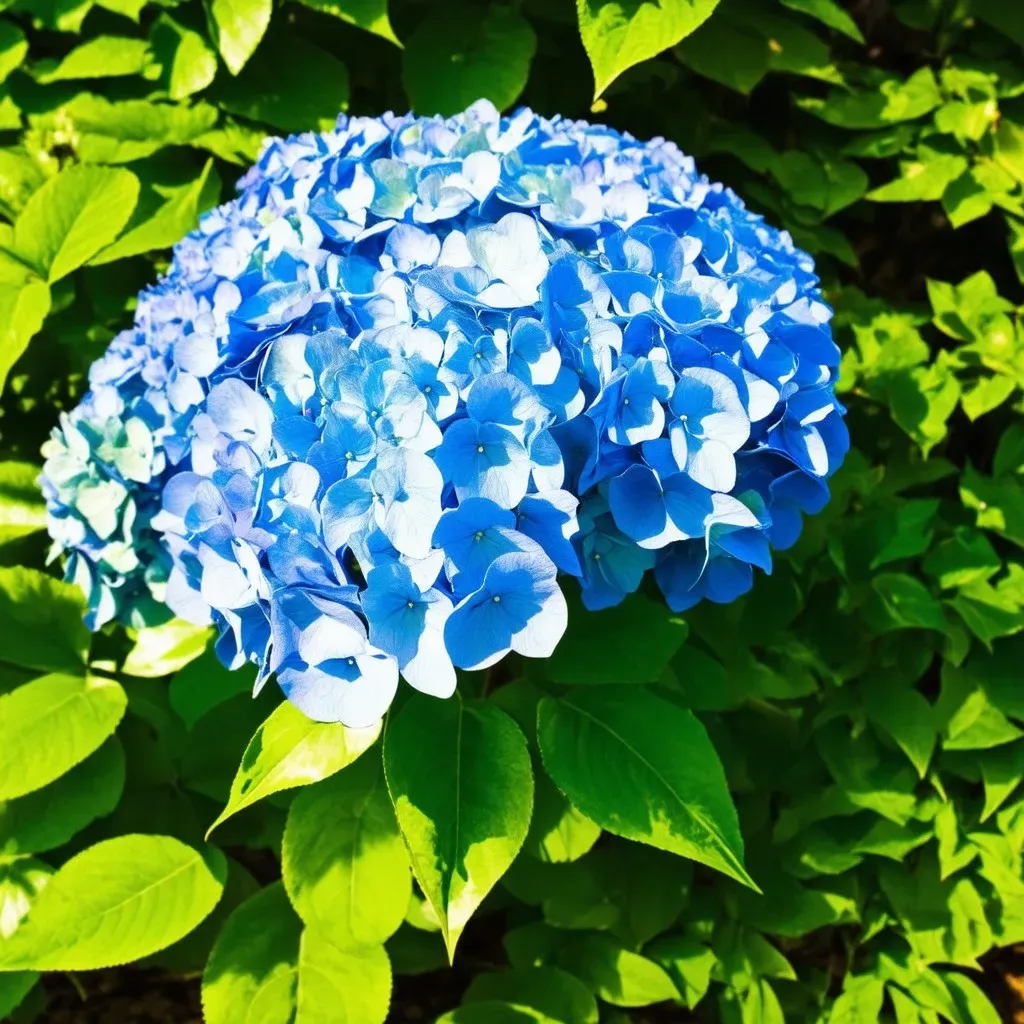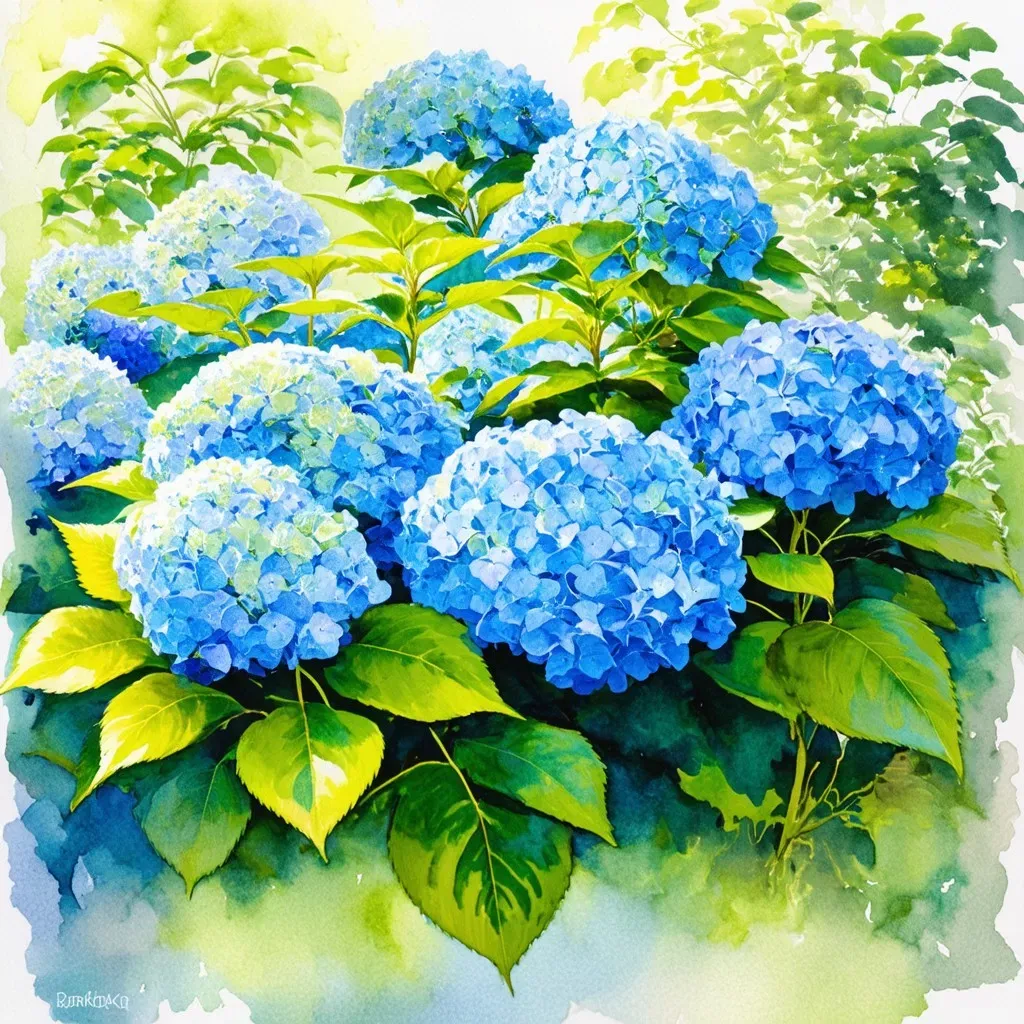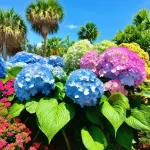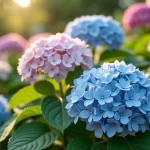The keyword you’re interested in is types of hydrangea-colors-blooms/unlock-the-secret-to-stunning-blue-hydrangeas-a-comprehensive-guide/">blue hydrangeas. These exquisite flowering plants are renowned for their captivating hues and diverse varieties, making them a favorite among garden enthusiasts. In this extensive guide, we’ll explore various types of blue hydrangeas, their characteristics, care tips, and more.
Overview of Blue Hydrangea Varieties
Blue hydrangeas, particularly those belonging to the hydrangea macrophylla species, are the most popular for their lush blooms and vibrant colors. They thrive in acidic soil, which is a key factor in achieving their stunning blue shade. Below we highlight some of the most notable types of blue hydrangeas:
| Varieties | Description | Height | Bloom Time | Hardiness Zone |
|---|---|---|---|---|
| Nikko Blue | Well-known for its reliable blue blooms; blooms are large and fluffy. | 4-6 feet | Mid-summer to fall | 5-9 |
| Endless Summer | Reblooms through summer; versatile in color depending on soil pH. | 3-5 feet | Late spring to fall | 4-9 |
| Twist-n-Shout | A lace-cap variety with unique flower structure; thrives in cooler weather. | 3-5 feet | Summer to fall | 4-9 |
| Penny Mac | Easy maintenance and consistent blooming; a reliable classic. | 4-6 feet | Summer to fall | 5-9 |
| Blue Enchantress | A compact variety good for borders; rich blue blooms. | 3-5 feet | Summer to fall | 4-9 |

Unique Features of Popular Varieties
-
Nikko Blue: This hydrangea has large, mophead blooms that can reach 5 inches across. The color can vary from light to deep blue based on soil conditions, especially pH levels.
-
Endless Summer: Famous for its reblooming capability, the Endless Summer hydrangea ensures a continuous flower display from early summer through fall, adapting its color based on soil acidity.
-
Twist-n-Shout: This unique lace-cap variety features flat clusters of flowers surrounded by showy petals. Its reliability in blooming makes it a stunning companion plant for Other shade-loving perennials.
-
Penny Mac: This variety is robust and easy to care for, favored for its resilience against harsh weather and ability to grow in varying conditions.
-
Blue Enchantress: Known for its compact size and reliable performance, this plant produces abundant blue flowers, making it excellent for smaller garden spaces or container planting.
Care Tips for Blue Hydrangeas
To maintain the beautiful blooms of blue hydrangeas, follow these essential care tips:
-
Soil Requirements: Ensure your hydrangeas are planted in well-draining soil with a pH between 5.5 and 6.0 for optimal blue coloration. For reference on soil preparation, visit Proven Winners.
-
Watering Needs: Keep hydrangeas consistently moist, especially during dry spells. Deep watering is essential; however, avoid waterlogging, which can lead to root rot.
-
Fertilization: A balanced, slow-release fertilizer can promote healthy growth. However, avoid over-fertilizing, as this can shift the pH of the soil.
-
Pruning: Prune after flowering to maintain the shape and health of the plant. Remove dead or damaged stems regularly to encourage new growth.
Common Pests and Diseases
-
Aphids: Small sap-sucking insects that can distort growth. Use insecticidal soap for control.
-
Powdery Mildew: A fungal disease that appears as white spots on leaves. Improve air circulation and consider fungicides for treatment.
-
Root Rot: Often caused by overwatering. Ensure proper drainage to prevent this condition.

Seasonal Considerations
Blooming Season
Blue hydrangeas typically bloom from late spring to early fall. Notable variations, like the Endless Summer, can extend this season with reblooming capabilities.
Seasonal Pruning
Late winter or early spring before new growth appears is the best time to prune most varieties. Pruning can influence the next blooming cycle, promoting larger flowers.
Creating a Breathtaking Garden Display
To create a stunning display with blue hydrangeas, consider the following landscaping tips:
-
Planting Groupings: Group plants of varying heights (e.g., Penny Mac at back and Blue Enchantress in front) to create depth.
-
Color Coordination: Combine blue hydrangeas with complementary flowers like white roses or purple salvias for vibrant contrast.
-
Container Arrangements: For patios or balconies, use dwarf varieties in containers to add color without requiring much space.
FAQ about Blue Hydrangeas
What makes blue hydrangeas blue?
The color of hydrangea flowers is influenced primarily by the presence of aluminum ions in the soil, which is available at a lower pH (acidity level).
Can I change the color of my hydrangeas?
Yes, by manipulating the soil pH (for instance, adding sulfur for acidity or lime for alkalinity), you can alter blue blooms to pink or purple.
Are blue hydrangeas suitable for beginners?
Absolutely! Many blue hydrangea varieties, such as Penny Mac, are low-maintenance and ideal for novice gardeners.
When do I fertilize my blue hydrangeas?
Fertilize in early spring as growth begins, and again in mid-summer for those that bloom continuously.
Do blue hydrangeas need full sun?
While they thrive in partial shade, blue hydrangeas can also tolerate full sun, especially in cooler climates. Ensure they receive some afternoon shade in hotter regions.

By understanding the types of blue hydrangeas available and how to care for them, gardeners can create stunning floral displays that will delight for years to come. Remember to consider the specific requirements of each variety to ensure thriving, vibrant blooms in your garden!


